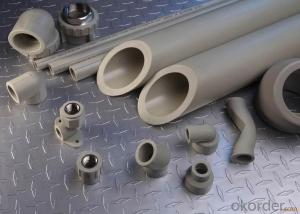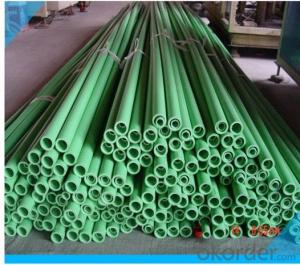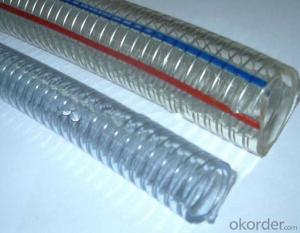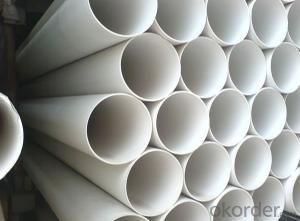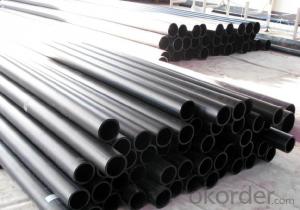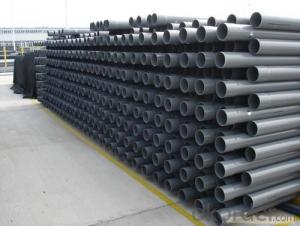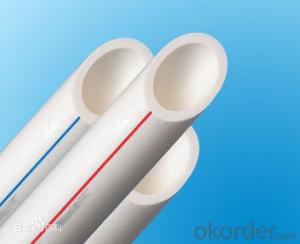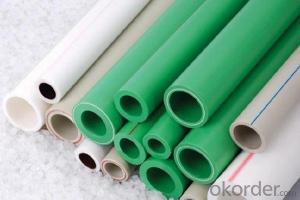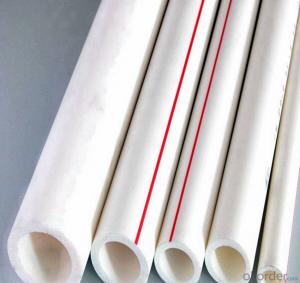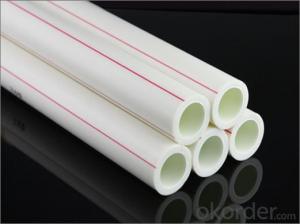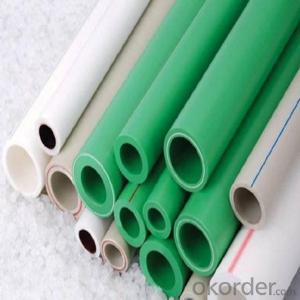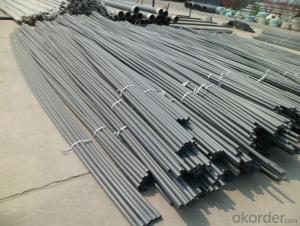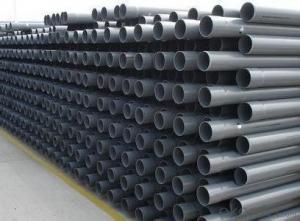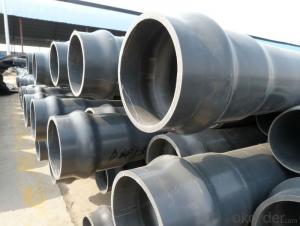Plastic Tubes - PPR Plastic Pipe
- Loading Port:
- China Main Port
- Payment Terms:
- TT OR LC
- Min Order Qty:
- -
- Supply Capability:
- -
OKorder Service Pledge
OKorder Financial Service
You Might Also Like
Features of PPR Pipe (white, gray):
1) Material: PPR
2) Dimensions: dn16-125mm
3) Pipe series: S5/PN12.5, S4/PN16, S3.2/PN20, S2.5/PN25
4) According to ISO15874, DIN: 8078 / 8077
5) Colors: white, gray, green
Properties PPR Pipe (white, gray):
1) Healthy and non-toxic, bacteriologically neutral, conforming to drinking water standards
2) Resistant to high temperatures (110°), good impact strength (over 5MPa)
3) Unique and unrivaled German connection technique, convenient and reliable installation, low construction expenses
4) Excellent heat-insulation property from minimum thermal conductivity
5) Lightweight, convenient to transport and handle, good for labor-saving
6) Smooth inner walls reduce pressure loss and increase flow speed
7) Sound insulation (reduced by 40% compared to galvanized steel pipes)
8) Light colors and excellent design ensure suitability for both exposed and hidden installation
9) Recyclable, environment-friendly, accords with GBM standards
10) Extremely long usage life for at least 50 years
Applications PPR Pipe (white, gray):
1) Cold and hot water supply systems for civil and industrial constructions, e.g. in residential buildings, hospitals, hotels, school and office buildings, ship building
2) Drinking water systems and food industry pipe works
3) Central air conditioning system
4) Irrigating system for gardens and green houses
5) Public and sport facilities such as swimming pools and stadiums
6) For rainwater utilization systems.
- Q: Can plastic tubes be used for chemical dispensing?
- Yes, plastic tubes can be used for chemical dispensing as long as the plastic material is compatible with the specific chemicals being dispensed to avoid any reactions or contamination.
- Q: How do plastic tubes compare to PVC pipes in terms of flexibility?
- Plastic tubes generally offer more flexibility compared to PVC pipes. While PVC pipes are rigid and not easily bendable, plastic tubes are designed to be pliable and can be easily manipulated or bent to accommodate various installation requirements.
- Q: Just curious, when there is only a bit of toothpaste left, I have to squeeze little by little from bottom up. But then after using it, I'll have to do the same thing next time around. Obviously the toothpaste has to settle down the tube. Why and how does it do that?
- The plastic material has internal stresses that retain the shape it was cast in originally. Since it is attached to a round head it tends to form a sort of flattened cone. The toothpaste moves back up the tube to fill the available space as it is a type of really thick fluid. The shape may also lead to the toothpaste moving upwards due to capillary action (similar to how water moves up a very thin straw) To combat this effect, you can buy a little squeezy thing that rolls over the tube to prevent the toothpaste from moving backwards, or you can fold/bend it over as you use it like many people do. I store mine upright on the cap so the toothpaste settles at the end I squeeze it out of. The tube also uses less counter space when you store it upright as compared to laid over on its side.
- Q: i connected a plastic tube about 7 or 8 inchs long onto a butane can im wondering if when i push down on the can and put a match near it can the fire go back into the can and make the can explode
- Sure can, even if you've posted this in the wrong category. Funny thing about fire... it likes to burn as long as possible so if the flame makes it's way into the tube... you should duck. Don't be foolish, keep your hands, fingers, eyebrows, etc and quit playing with fire.
- Q: Can plastic tubes be used for aquariums?
- Yes, plastic tubes can be used for aquariums. They are commonly used for various purposes such as connecting filters, air pumps, and other equipment to the aquarium. However, it is important to ensure that the plastic tubes used are safe for aquatic life and do not release any harmful substances into the water.
- Q: How to calculate joint parts for hot melt connection of water supply plastic pipe?
- Calculate the joint, you have to draw a sketch, and then point out how many joints.
- Q: I need a smooth tubing or piping that can be easily bent. i dont care really what its made of, plastic or whatever, just as long as it can be about 3-5 inches in diameter and is very bendy (also possibly easily to cut). All i need is the name of the pipe and maybe a website that carries it... thanx.
- PVC drain pipe and fittings, like at Home Depot, sounds closest to what you want. Anything flexible is not smooth on the inside, check out dryer hose, for example.
- Q: What is the average cost of plastic tubes?
- The average cost of plastic tubes can vary depending on factors such as size, material, and quantity. However, a rough estimate would be anywhere from a few cents to a few dollars per tube.
- Q: Are plastic tubes resistant to water?
- Yes, plastic tubes are generally resistant to water.
- Q: How do you cut plastic tubes to size?
- To cut plastic tubes to size, you can use a few different methods. One common way is to use a fine-toothed saw or pipe cutter specifically designed for plastic materials. Another option is to carefully score the tube with a utility knife and then snap it along the scored line. Additionally, you can use a power tool like a rotary tool with a cutting wheel attachment. Whichever method you choose, it's important to measure and mark the desired length accurately before cutting to ensure an accurate and clean cut.
Send your message to us
Plastic Tubes - PPR Plastic Pipe
- Loading Port:
- China Main Port
- Payment Terms:
- TT OR LC
- Min Order Qty:
- -
- Supply Capability:
- -
OKorder Service Pledge
OKorder Financial Service
Similar products
Hot products
Hot Searches
Related keywords
